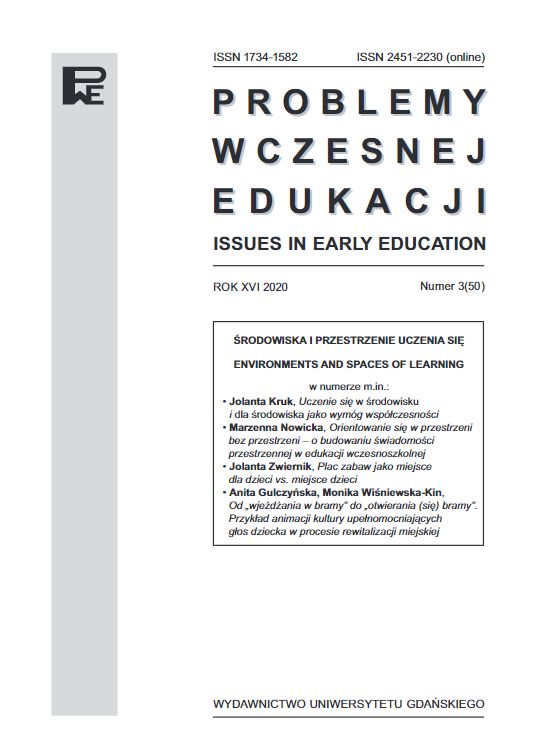Plac zabaw jako miejsce dla dzieci vs. miejsce dzieci
DOI:
https://doi.org/10.26881/pwe.2020.50.03Słowa kluczowe:
plac zabaw, przygodowy plac zabaw, nie-miejsce, miejsce dla dzieci, miejsce dzieci, dyskurs opiekuńczy, dyskurs emancypacyjnyAbstrakt
The content of the article is an analysis of two different concepts of children’s playgrounds, one of which is a standard urban/pre-school playground, reproduced in countless variations, and the other is an individualised variation of an adventure playground. The criterion of the analysis was the concept of a non-place by Marc Augé and the pedagogical concept of a place by Maria Mendel, Dorota Klus-Stańska, Jolanta Zwiernik. The analysis has identified two types of discourses that characterize adult organizers of children’s playgrounds: care discourse and emancipatory discourse. The care discourse is a manifestation of concern for children’s safety and it is revealed in the organization of space and delimitation of children’s activity in standard playgrounds, which makes it a place for children (non-place in the Augé concept). The emancipatory discourse makes use of the educational advantages offered by adventure playgrounds and by creating the conditions to increase the participation of children in the life of their community now and in the future makes them children’s place.

 Uniwersyteckie Czasopisma Naukowe
Uniwersyteckie Czasopisma Naukowe





